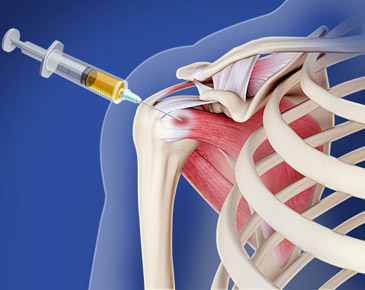Stem cell therapy has shown significant potential for treating joint problems, particularly in conditions like osteoarthritis, cartilage damage, and other musculoskeletal issues. Here's how stem cell therapy can help joints:
1. Regeneration of Cartilage
Cartilage Repair: Stem cells, particularly mesenchymal stem cells (MSCs) derived from bone marrow or adipose tissue, have the ability to differentiate into cartilage-producing cells (chondrocytes). When injected into damaged joints, they can stimulate the regeneration of cartilage, helping to restore joint function.
2. Reduction of Inflammation
Anti-inflammatory Effects: Stem cells release various growth factors and cytokines that help reduce inflammation in the joints. This can be especially beneficial for conditions like osteoarthritis, where chronic inflammation contributes to pain and damage.
3. Pain Relief
Pain Modulation: Stem cells can help modulate the pain signals in the joint area. This can result in reduced pain and improved mobility, as the cells promote the healing of damaged tissues and reduce inflammation, both of which are pain contributors.
4. Tissue Regeneration
Repair of Ligaments, Tendons, and Muscles: In addition to cartilage, stem cells can help repair other structures around the joint, such as tendons and ligaments. These tissues often suffer damage due to injury or chronic stress, and stem cells can assist in regenerating them, restoring joint stability and function.
5. Joint Function and Mobility
Restoration of Function: By promoting the regeneration of damaged tissues and reducing inflammation, stem cell therapy can improve overall joint mobility and function. Patients may experience increased range of motion, reduced stiffness, and improved strength.
6. Personalized Treatment
Customization: Stem cell therapy allows for a more tailored approach to treating joint issues. The treatment can be personalized based on the patient’s age, the extent of joint damage, and the type of tissue that needs repair.
7. Slowing Disease Progression
Long-Term Benefits: Stem cell therapy may slow the progression of degenerative joint diseases, such as osteoarthritis, by preventing further damage to cartilage and tissues. This can help maintain the health of the joint over time and delay the need for more invasive treatments like joint replacement.
Current Research and Considerations:
Although stem cell therapy for joint health is promising, it’s still being studied and is not universally approved or standardized for all patients or conditions.
Success rates vary, and not all patients respond the same way to treatment. The source of stem cells, the method of administration, and the specific joint being treated all play a role in the outcome.
.jpg)
Stem cell therapy holds great promise for cardiovascular diseases, offering the potential to regenerate damaged heart tissue, improve blood flow, reduce inflammation, and restore heart function. It represents an exciting avenue for treating chronic heart conditions, such as heart failure and coronary artery disease, that have limited treatment options. However, more research and clinical trials are necessary to fully understand the long-term effects and risks associated with these therapies. As the science advances, stem cells could play an increasingly important role in treating heart disease, improving patient outcomes, and reducing the need for heart transplants or other invasive interventions.

Stem cell therapy holds significant promise for treating cardiovascular diseases (CVDs) by harnessing the body’s ability to regenerate damaged heart tissue, improve blood flow, and restore heart function. Here’s how stem cells can help in the treatment of cardiovascular diseases:
1. Regeneration of Heart Muscle
Repairing Heart Tissue: In conditions like heart attacks (myocardial infarctions) or heart failure, the heart muscle can be severely damaged due to a lack of oxygen. Stem cells, particularly cardiac stem cells and mesenchymal stem cells (MSCs), have the potential to regenerate heart tissue by differentiating into heart muscle cells (cardiomyocytes). This can help repair the damaged tissue, improving heart function and reducing the symptoms of heart failure.
Cardiac Tissue Replacement: Stem cells can also form new blood vessels (a process called angiogenesis), which improves the blood supply to the heart muscle, further aiding in the regeneration of damaged tissue.
2. Restoring Blood Flow (Angiogenesis)
New Blood Vessels Formation: In cases of coronary artery disease (CAD), where the arteries that supply the heart with blood become blocked or narrowed, stem cells can stimulate the growth of new blood vessels. By injecting stem cells into the heart, it can promote angiogenesis—the formation of new blood vessels that bypass blocked arteries, improving blood flow and oxygen supply to the heart muscle.
Improving Blood Supply: This is particularly helpful for patients with chronic ischemia (reduced blood flow to the heart), a condition that can lead to heart failure if left untreated.
3. Reducing Inflammation
Anti-inflammatory Effects: Stem cells, especially mesenchymal stem cells (MSCs), have shown the ability to modulate the immune system and reduce inflammation in heart tissue. Chronic inflammation plays a key role in heart disease, particularly in conditions like atherosclerosis and after a heart attack. By reducing inflammation, stem cells can help prevent further damage to the heart muscle and improve healing.
Prevention of Scar Tissue Formation: After a heart attack, the heart forms scar tissue (fibrosis) as part of the healing process. However, excessive scar tissue can interfere with the heart’s ability to pump blood efficiently. Stem cells can reduce the formation of this scar tissue and promote the regeneration of healthy heart muscle cells, improving overall heart function.
4. Cardiovascular Repair After a Heart Attack
Post-Heart Attack Recovery: When a heart attack occurs, a portion of the heart muscle is deprived of oxygen and can die. Stem cell therapy offers the potential to replace the dead tissue with new, functional heart cells. The stem cells can integrate into the heart muscle and start performing normal heart functions, such as contracting and pumping blood.
Functional Recovery: Stem cells not only repair the structural damage but also improve the electrical signaling of the heart, helping to restore normal heart rhythms and reduce the risk of arrhythmias (irregular heartbeats).
.jpg)
5. Improving Heart Function in Heart Failure
Cell-Based Regenerative Treatment: In heart failure, where the heart’s ability to pump blood is compromised, stem cells can help restore heart function by regenerating heart tissue and improving the pumping capacity of the heart. This can reduce symptoms such as shortness of breath, fatigue, and swelling, and improve the patient’s quality of life.
Support for Chronic Conditions: In patients with long-term heart failure, stem cell therapy can slow disease progression, improve heart muscle function, and reduce the need for invasive interventions, such as heart transplants.
6. Types of Stem Cells Used in Cardiovascular Therapy
Mesenchymal Stem Cells (MSCs): These are often derived from bone marrow or adipose (fat) tissue. MSCs have the ability to differentiate into a variety of cell types, including heart muscle cells, and can promote tissue repair and reduce inflammation.
Cardiac Stem Cells: These stem cells are directly sourced from the heart and are capable of regenerating heart muscle tissue.
Induced Pluripotent Stem Cells (iPSCs): These are reprogrammed adult cells that can differentiate into any type of cell, including heart cells. iPSCs can be generated from the patient’s own cells, reducing the risk of immune rejection.
Endothelial Progenitor Cells (EPCs): These cells help form new blood vessels and can be used in therapies aimed at promoting angiogenesis in patients with heart disease.
7. Clinical Applications and Trials
Ongoing Research: Clinical trials are ongoing to determine the best methods of administering stem cells, the most effective types of stem cells, and the optimal conditions for treating heart disease. Some studies have shown promising results, while others are still in the experimental phase.
Autologous Stem Cells: Using stem cells derived from the patient’s own body (autologous stem cells) reduces the risk of immune rejection and complications, making this a preferred method in some cases.
8. Limitations and Challenges
Effectiveness and Safety: While stem cell therapy offers great potential, it is still being studied, and its long-term effectiveness and safety are not fully established. The success of stem cell treatments can vary depending on factors like the patient’s age, the type of heart disease, and the stage of the condition.
Ethical and Regulatory Issues: The use of stem cells, especially embryonic stem cells, is subject to ethical considerations and regulatory guidelines, which may limit their availability and use in some regions.
Risk of Tumor Formation: There is also a potential risk of stem cells forming tumors if not properly controlled, especially when using pluripotent stem cells like iPSCs.






